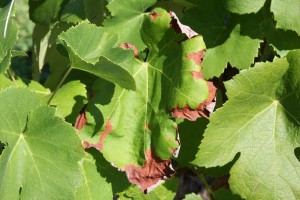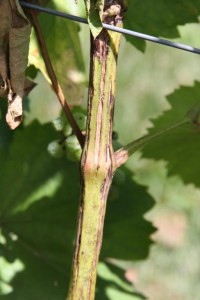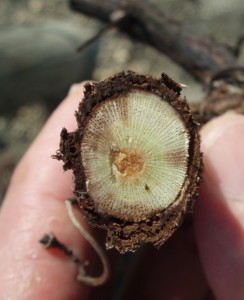Oils increase the ability of the Captan molecule to get into the plant. Be aware that it is not only straight oils like Stylet oil, but any oil-containing formulation like solvent-based insecticides and emulsifiable concentrates (EC formulations) that can increase Captan penetration. Another important factor is the condition of the plants. Warm, cloudy, humid weather can cause the leaves to be more easily penetrated and therefore more susceptible to injury. The damage has been seen on vinifera as well as hybrid grapes. Always follow all label directions and be especially aware of the following points from the Captan 80WDG label:
- Do not apply this product in combination with or immediately before or closely following oil sprays.
- Do not allow oil sprays on adjacent crops to drift onto crops which have been or will shortly be treated with this product.
- The time factor governing the safe interval between this product and oil sprays varies due to general climatic conditions, therefore, consult local agricultural spray programs and authorities to determine the proper timing.
- The use of spreaders which cause excessive wetting is not advised.
- Combinations with solvent formulations of organic phosphates should not be used.
- This type of injury is most likely to occur in the early cover sprays during long periods of warm, cloudy, humid weather.
- Do not combine with emulsifiable liquids or wettable powders unless previous experience has proven them to be physically compatible and safe to plants.
Weather conditions affect how soon after an oil-containing spray it is safe to spray Captan, but, in general, to be safe any spray materials that contain oil should not be applied within 14 days of Captan application.




